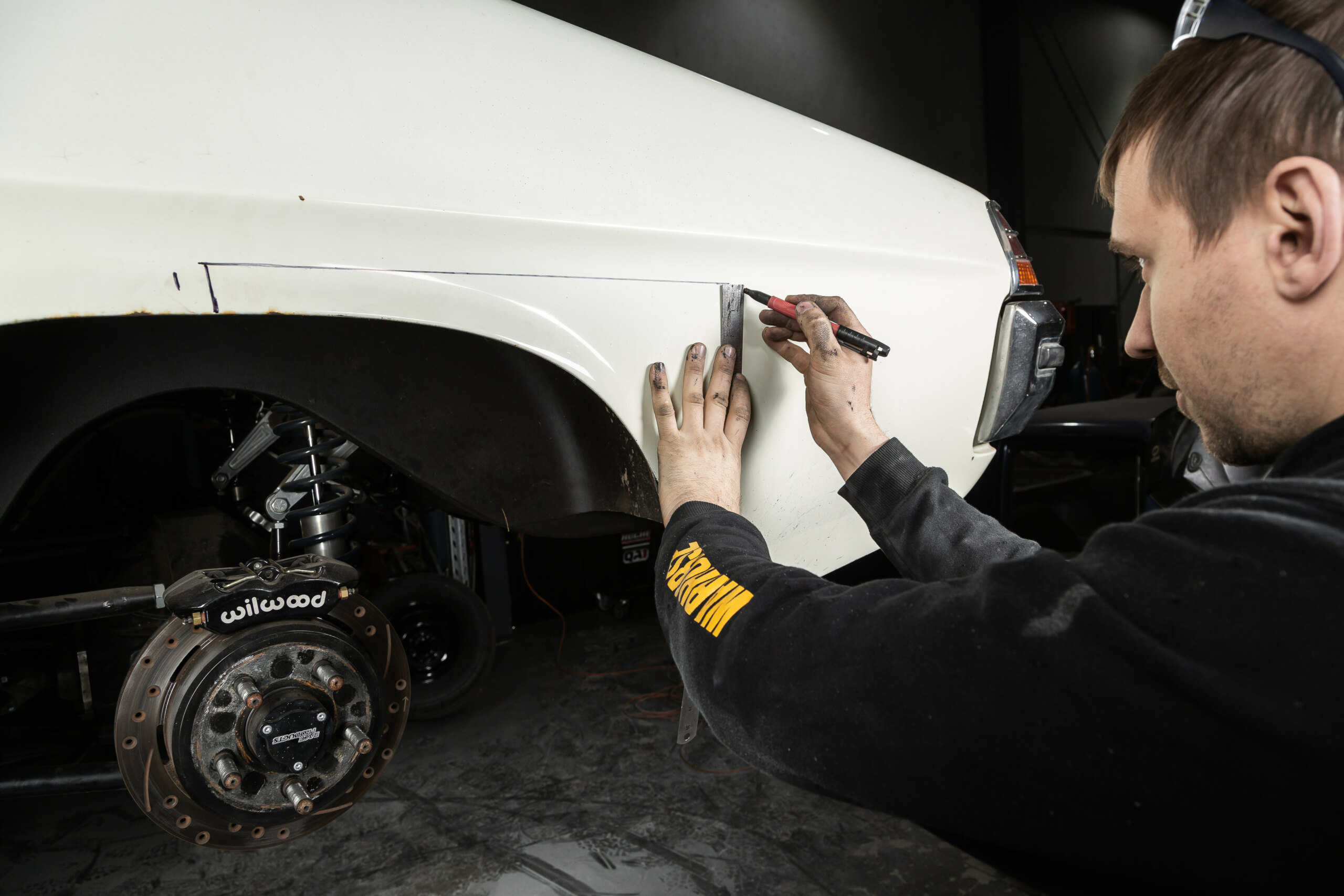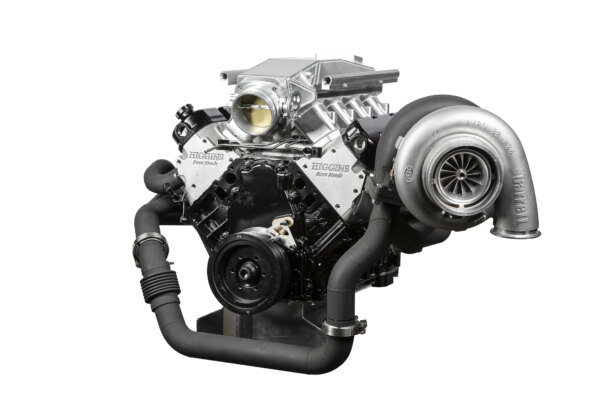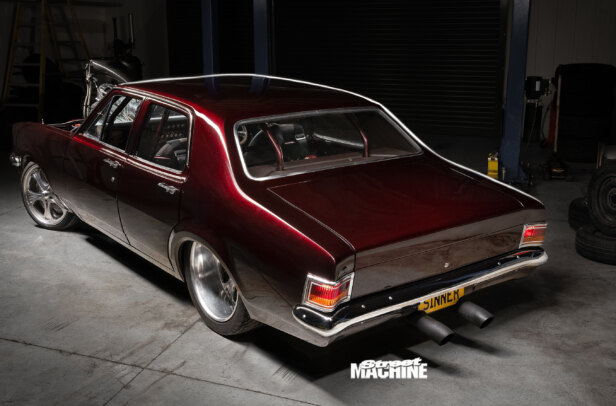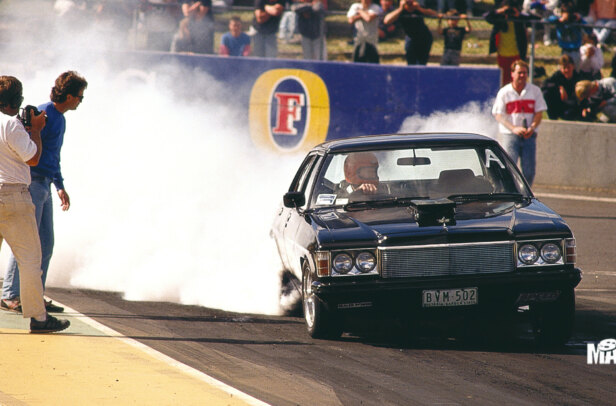JAMMING a pair of giant slicks under your street machine is a ticket to the cool table, but how do you actually get those beefy meats under the rear end of a car that came from the factory with tobacco tins for wheels? You stretch the guards!
Chris Sheppard, one of the partners in Warhorse Inc, has owned this HJ Kinger since he was 17, but it has come a long way in the intervening years. Today, the car they call SIR HJ packs a Dart 427ci LS inflated by twin 72mm BorgWarner turbos, with a full-floater fabricated nine-inch sitting in a tubbed rear clip and aftermarket four-link set-up.
With an eye on running the monster at Street Machine Drag Challenge, the Warhorse crew realised they’d be traction-limited, so they invited us along to check out how to properly increase the rear-end real estate and stuff more rubber under the guards.
STEP-BY-STEP
Step 1. The HJ was set up for 275/60 Radial Pros, but the Warhorse guys realised the benefits of adding more tyre. “We were going to run it on a radial, but then we decided to go the big slick for better traction, especially if we go no-prep racing,” Warhorse’s Brad Lowe explains. “We could run a small-tyre slick, but a bigger slick just makes it all simpler. The downside is it’s made all our radial cars look pretty small now!”
Step 2. GM-H never designed the H-series to swallow 31.25×12.2 slicks, so this meant the sedan’s factory guards had to be cut and sectioned rearwards to fit. “The biggest problem with these Holdens is how the rear guard rolls back around the arch towards the bottom, and a big tyre like this 31in slick will collect the return edge,” Brad explains. “Pushing the guard opening rearward gives us space there”
Step 3. The guard opening is measured to work out how much of a stretch will be required to fit the slicks. This HJ sedan needs the trailing edge of the wheelarch moved 82.55mm (3.25in) further back
Step 4. A laser is used to find the centre point of the diff and wheelarch, and this becomes the point of reference for all measurements. String lines and plumb bobs are an old-school way to achieve the same result
Hold the line
Cutting into a classic car is no small thing, but Warhorse Inc’s Brad Lowe is surprised at how little planning seems to have gone into some guard-stretching jobs.
“You need to pick the best spot on the car to preserve the body, so we’ll generally spend a while having a really good look at the body lines before we start cutting anything,” he says. “We try to avoid cutting through a body line, as that massively increases the amount of work you need to do, so we plan very carefully around making the cuts that then require the least amount of reworking.”
Step 5. With the section of the arch cut out, it is time to open up the back of the guard to create the wider wheelarch. The trimmed section is used as a template for the 3.25in fillet that needs to be removed
Step 6. The guard now has plenty of real estate for those big 31in meats! The paint is cleaned off the edge for clean welds, while the base of the new part of the wheelarch is trimmed with a flap disc on a grinder to blend cleanly into the section of guard it will be welded to
Step 7. A fillet is folded up on a sheet-metal brake and tacked into place, covering where the original centre section of the arch was moved back
Step 8. “Usually we TIG-weld the body, not MIG,” says Brad. “TIG is softer and easier to work, but don’t stress if you only have a MIG welder – just don’t do a big long run of MIG and warp your panels!”
Step 9. “It takes about a day’s work to get to the point where it is ready for a skim of bog before paint,” Brad says. “We’d already done the tubs, so it made it much easier because all the inner wheelhouse was already moved. It’s more of a process if that hasn’t been done”
Step 10. Brad cautions against stretching the guards on a stock example without also doing substantial rear-end mods like a custom-width diff and narrowed rails. “I could never imagine anyone stretching a guard without tubbing their car, as these mods go hand in hand,” he says. “By the time you’re going to this size tyre, you’ve definitely got more work in the rear end”
DOUBLE PUMP
This HG ute was stretched 50.8mm (2in) rearwards to suit 395 radials on the back, but is now going to be stretched further again to accommodate the 24×14 Showwheels the owner wants to run when not racing. For this next work, Brad and the Warhorse team will have to open up the front side of the arch.




Comments